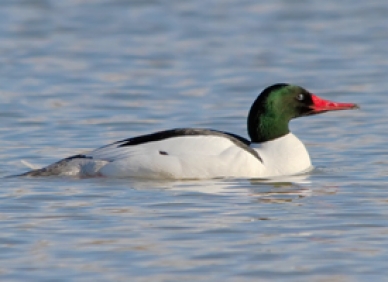Alaska Species Explorer
All
x
- – No known individuals remaining.
- – Known only to survive in captivity, or as a naturalized population outside its historic range.
- – Extremely high risk of extinction in the wild.
- – High risk of extinction in the wild.
- – High risk of endangerment in the wild.
- – Likely to become endangered in the near future.
- – Lowest risk. Does not qualify for a higher risk category. Widespread and abundant taxa are included in this category.
- – Not enough data to make an assessment of its risk of extinction.
- – Has not yet been evaluated against the criteria.
Common Merganser
- – No known individuals remaining.
- – Known only to survive in captivity, or as a naturalized population outside its historic range.
- – Extremely high risk of extinction in the wild.
- – High risk of extinction in the wild.
- – High risk of endangerment in the wild.
- – Likely to become endangered in the near future.
- – Lowest risk. Does not qualify for a higher risk category. Widespread and abundant taxa are included in this category.
- – Not enough data to make an assessment of its risk of extinction.
- – Has not yet been evaluated against the criteria.
The Common Merganser population in North America has been stable over the last half-century, according to the North American Breeding Bird Survey, except for a persistent declining trend evident in Manitoba, Canada. The IUCN status is a least concern species.
The males are striking with clean white bodies, dark green heads, and a slender, serrated red bill. The females have gray bodies and cinnamon heads with a short crest.
These ducks live mainly on freshwater rivers and lakes. They are rare in the ocean, but they sometimes use saltwater estuaries in winter. They nest in tree cavities in northern forests near rivers and lakes.
- Common Mergansers are sometimes called sawbills, fish ducks, or goosanders.
- Usually nest in natural tree cavities or holes carved out by large woodpeckers.
- Hatchlings leave the nest within one to two days and hunt for their own food.



















